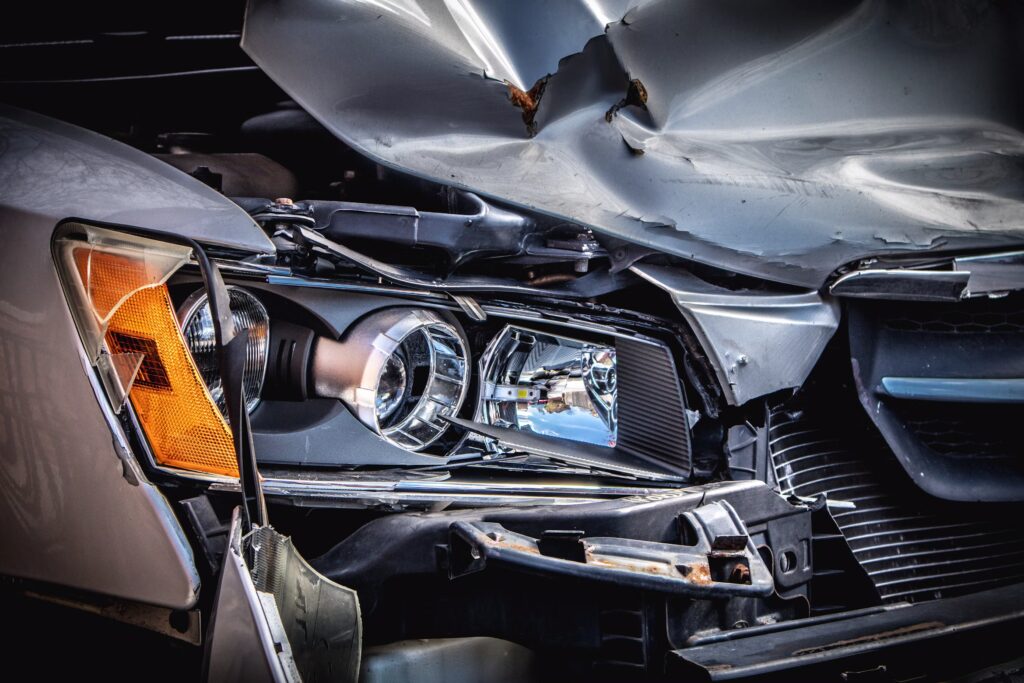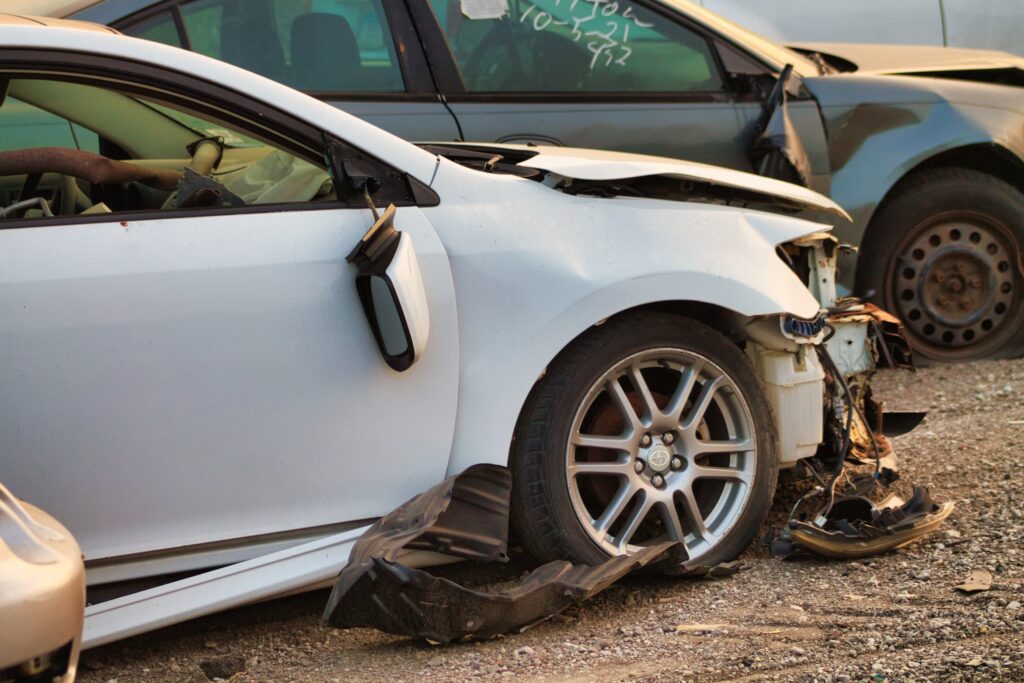Vehicle Diminished Value | Legal Rights and Compensation Process after Traffic Accidents
October 6, 2025 |
- Articles
| 13 minutes
Traffic accidents not only cause loss of life and property; they also lead to a significant economic loss known as “vehicle diminished value” in the second-hand market value of vehicles. Vehicle diminished value is the lower valuation of a repaired vehicle compared to its undamaged counterparts, even if it has been perfectly repaired after an accident.
In Turkey, this concept has become an important legal issue since 2011, especially in the insurance sector and with the established jurisprudence of the Supreme Court. In Supreme Court decisions, vehicle diminished value is defined as “the difference between the undamaged market value of the motor vehicle before the accident and its market value after repair” and is considered a type of damage that must be directly compensated.
Vehicle diminished value is not just a technical concept; it is also a factor that directly affects drivers’ psychological perception, demand trends in the second-hand market, and disputes between insurance companies and vehicle owners. Therefore, it needs to be addressed in both legal and economic dimensions.

What is Vehicle Diminished Value?
Vehicle diminished value is the difference between the second-hand market value of a vehicle involved in a traffic accident before the accident and its second-hand market value after repair, even if the repair is completed. In other words, even if the vehicle is repaired at an authorized service center with original parts and flawless workmanship, it is sold at a lower price in the second-hand market with the label of “accident-damaged”. This situation is legally considered within the scope of “actual damage”.
According to the consistent decisions of the Supreme Court, diminished value is “the difference between the undamaged market value of the motor vehicle before the accident and its market value after repair”, and this difference must be compensated. This type of damage has been legally grounded in the Turkish Commercial Code, Highway Traffic Law, and Turkish Code of Obligations; and the calculation method has been officially regulated with the Compulsory Financial Liability Insurance (CFLI) General Conditions dated 01.06.2015.
Technical and Commercial Diminished Value
Vehicle diminished value occurs not only due to the extent of damage but also due to technical and commercial factors:
- Technical Diminished Value: Arises from the disruption of the vehicle’s factory originality as a result of repairs made to the body structure, chassis, bodywork, or paint.
- Commercial Diminished Value: The depreciation that occurs due to lower demand for accident-damaged vehicles in the second-hand market.
Therefore, vehicle owners have the right to claim compensation for this loss by applying to insurance companies or the Insurance Arbitration Commission.
Legal Foundations of Vehicle Diminished Value
Vehicle diminished value has been clearly defined in the Turkish legal system and accepted as a compensable type of damage. This damage is secured by both legal regulations and the established jurisprudence of the Supreme Court.
1. Highway Traffic Law
Articles 85 and 91 of the Highway Traffic Law No. 2918 regulate the liability of motor vehicle operators and the scope of compulsory financial liability insurance. According to the law, vehicle operators and insurers are obliged to compensate for damages caused to third parties. Among these damages is the diminished value that occurs in the value of the vehicle despite repair.
2. Turkish Code of Obligations
Turkish Code of Obligations (TCO) Art. 49 and subsequent articlesstipulate that damages arising from tortious acts must be compensated. The loss in the value of the vehicle due to an accident is also considered a material damage resulting from a tortious act.
3. Compulsory Financial Liability Insurance General Conditions (CFLI)
The CFLI General Conditions dated 01.06.2015 have regulated the formula and methods for calculating vehicle diminished value. According to this regulation, diminished value is determined by considering the vehicle’s make, model, age, mileage, damaged parts, and the nature of the repair.
4. Supreme Court Jurisprudence
The Supreme Court has long accepted in its decisions that vehicle diminished value is an independent damage that needs to be compensated. According to the High Court;
“The difference between the undamaged market value of the motor vehicle before the accident and its market value after repair should be accepted as diminished value and paid to the injured party.”
5. Insurance Arbitration Commission
Since 2011, with increasing disputes, the Insurance Arbitration Commission has been examining a significant portion of vehicle diminished value cases and providing quick solutions to rights holders. According to research, when insurance companies do not make payment within 15 days in individual applications, a significant portion of the cases are resolved in Insurance Arbitration.

How is Vehicle Diminished Value Calculated?
Vehicle diminished value is determined by calculating the difference between the undamaged market value before the accident and the market value after repair of the vehicle repaired after the accident. This difference varies according to both technical criteria and market conditions.
In Turkey, both the Supreme Court method and the CFLI General Conditions formula dated 01.06.2015 are used in calculating diminished value.
1. Method Adopted by the Supreme Court
According to the consistent jurisprudence of the Supreme Court, diminished value is calculated based on “the difference between the undamaged market value of the vehicle involved in the accident before the accident and its market value after repair”.
- This method particularly takes into account the vehicle’s age, mileage, and parts affected by the accident.
- The method is reported by insurance adjusters and experts and is accepted as valid in courts.
- For example, let’s consider a vehicle with a market value of 1,000,000 TL that has been involved in a serious accident.
- Undamaged market value: 1,000,000 TL
- Market value after repair: 930,000 TL
- Diminished value: 70,000 TL This difference is the damage that needs to be directly compensated
2. Treasury Undersecretariat CFLI Formula (01.06.2015)
The “Diminished Value Calculation Method” is included in the annex of the Compulsory Financial Liability Insurance (CFLI) General Conditions that came into effect on 01.06.2015. This formula includes parameters such as:
- Vehicle market value
- Mileage coefficient
- Damaged part coefficient
- Paint and repair coefficient and mathematically calculates the diminished value.
For example;
- Let’s consider a luxury vehicle with a market value of 1,000,000 TL that has been involved in a serious accident.
- Undamaged market value: 1,000,000 TL
- Market value after repair (according to formula coefficients): 960,000 TL
- Diminished value: 40,000 TL
- This calculation has been determined by considering the mathematical coefficients (mileage, part, paint factors) according to the formula in the annex of the CFLI General Conditions dated 01.06.2015.
3. Difference Between the Two Methods
- Supreme Court method: 70,000 TL
- CFLI formula: 40,000 TL
Different figures can emerge for the same vehicle. Insurance companies generally base their calculations on the CFLI formula, which yields lower results; while vehicle owners and lawyers often assert the Supreme Court method to claim higher compensation.
4. Differences in Market Application
According to research, there are statistically different results between the Supreme Court method and the CFLI formula.
- The Supreme Court method generally determines a higher diminished value,
- while the CFLI formula can yield lower figures.
Therefore, insurance companies mostly rely on the CFLI formula, while vehicle owners and lawyers often assert the Supreme Court method.
5. Main Factors Affecting Diminished Value
- Vehicle’s age and mileage
- Nature of damaged parts (bodywork, chassis, number of painted parts)
- Quality of repair (original parts or aftermarket?)
- “Accident-damaged vehicle” perception in the second-hand market
- Market conditions and regional differences
Vehicle Diminished Value Application and Lawsuit Process
To claim compensation for vehicle diminished value, the amount of damage determined after the accident must be requested through an application to the insurance company. In Turkish law, this process can proceed through both administrative and judicial channels.
1. Application to the Insurance Company
- The damaged vehicle owner applies to the insurance company with the expert report, registration, traffic policy, and accident report after the accident.
- The insurer has an obligation to make payment within 15 days from the receipt of the application.
- However, in practice, insurance companies often offer lower payments or make no payment at all.
2. Insurance Arbitration Commission
- If a satisfactory result is not obtained from the insurance company, an application can be made to the Insurance Arbitration Commission.
- According to research, a significant portion of diminished value applications are resolved in arbitration, and decisions are made within an average of 4–6 months.
- This method is faster and less costly compared to the court process.
3. Lawsuit Through Court
- If no result is obtained from insurance arbitration or if the party wishes to file a lawsuit directly, a diminished value lawsuit can be filed in the Commercial Court of First Instance or competent courts.
- During the trial, expert reports are obtained, and calculations are made considering both the Supreme Court method and the CFLI formula.
- The duration of the lawsuit generally varies between 8–12 months.
4. Importance of Lawyer Support
- In practice, insurance companies often prefer to make lower payments by asserting the CFLI formula.
- The Supreme Court method, which provides higher compensation in favor of the vehicle owner, is mostly asserted by lawyers during the lawsuit process.
- Therefore, getting expert lawyer support in diminished value claims is critical to avoid loss of rights.
Case Study: Example of Diminished Value for a Vehicle Worth 1,000,000 TL
In 2025, in a region of Istanbul, a vehicle with a market value of 1,000,000 TL suffered serious damage when another vehicle hit its rear section. The vehicle was completely repaired at an authorized service center, original parts were used, and its exterior appearance was flawlessly restored to its original state. However, due to second-hand market conditions and the “accident-damaged vehicle perception”, the vehicle’s value decreased.
Calculation According to the Supreme Court Method
- Undamaged market value: 1,000,000 TL
- Market value after repair: 930,000 TL
- Diminished value: 70,000 TL
According to the consistent decisions of the Supreme Court, this difference is the damage that needs to be directly compensated.
Calculation According to the CFLI General Conditions Formula
Coefficients have been applied according to the CFLI General Conditions formula dated 01.06.2015:
- Vehicle market value: 1,000,000 TL
- Mileage coefficient: 0.80 (example: 40,000 km)
- Part coefficient: 0.25 (2 main parts damaged)
- Paint coefficient: 0.20
Calculated diminished value: 40,000 TL
Application Process
The vehicle owner applied to the insurance company immediately after the accident, but the company agreed to pay only 40,000 TL. Upon this, the vehicle owner applied to the Insurance Arbitration Commission through MFY Legal attorneys.
Arbitration Decision
In the expert report obtained in arbitration, the Supreme Court method was taken as basis and the vehicle’s diminished value was determined as 70,000 TL. The Commission ruled that this amount should be paid to the vehicle owner.
Conclusion
- Payment offered by the insurance company: 40,000 TL
- Amount awarded in the arbitration decision: 70,000 TL
- The vehicle owner received the full amount they were entitled to with the legal support of MFY Legal.
Frequently Asked Questions (FAQ)
For vehicle diminution in value claims arising from traffic accidents, a two-year statute of limitations applies (TCO Art.72). The application must be made within this period against the at-fault driver or insurance.
The insurance company must make the payment within 15 days of receiving the application (MTPL General Terms, 2015). Otherwise, interest accrues and the right to legal action arises.
If a negative response is received from the insurance company or if no response is given within 15 days, you can apply to the Insurance Arbitration Commission. The average resolution time here is 4-6 months.
The competent court is the Commercial Court of First Instance. The case duration typically ranges from 8-12 months. Expert examination is conducted and Supreme Court + MTPL calculation methods are evaluated.
Vehicle registration, traffic insurance policy, accident report, repair invoices/expert report. The application process cannot proceed without these documents.
It’s not mandatory but recommended. Insurance companies typically make lower payments based on the MTPL formula. When applying through a lawyer, higher compensation can be obtained based on the Supreme Court method.
Diminution in value claims are not accepted for total loss vehicles, vehicles over 10 years old and 165,000 km (MTPL criteria), and vehicles involved in accidents caused by the driver’s own fault.
Vehicle diminution in value is the loss that occurs when a vehicle cannot maintain its original value in the used car market despite being repaired after an accident. The difference between the pre-accident value and post-repair value is considered “actual damage” under the Turkish Code of Obligations and Highway Traffic Law. The Supreme Court and MTPL General Terms provide for compensation of this difference.
Initially, it is made to the insurance company. The vehicle owner who has suffered damage applies to their insurer with the expert report, registration, accident report, and policy. The insurer has a 15-day obligation to pay. However, companies often offer lower amounts.
Initially, it is made to the insurance company. The vehicle owner who has suffered damage applies to their insurer with the expert report, registration, accident report, and policy. The insurer has a 15-day obligation to pay. However, companies often offer lower amounts.
An application can be made to the Insurance Arbitration Commission. If a negative response is received from the insurance company or no response is given, the application is made to the Insurance Arbitration Commission. The process here takes an average of 4–6 months. The damage is determined by an expert report and the decision is binding.
The Commercial Court of First Instance is authorized. The vehicle owner can directly file a lawsuit if they wish. The competent court is the Commercial Court of First Instance. Here, an expert examination is conducted and both the Supreme Court method and the ZMSS formula are discussed. The lawsuit process takes approximately 8–12 months.
It is possible but risky. Vehicle owners can apply individually; however, in practice, insurance companies often make low payments. In applications made through a lawyer, based on the Supreme Court method, higher compensation can be obtained. Therefore, lawyer support is important to avoid loss of rights.
There is no cost in the insurance application. There is a nominal application fee for arbitration. When a lawsuit is filed, court fees and expert costs are paid. The costs of the party who wins the case or arbitration are charged to the opposing party.
In arbitration, it takes an average of 4–6 months, and in court, 8–12 months. Despite the insurance company’s obligation to respond within 15 days, the process is often taken to arbitration or court. While arbitration can be concluded in a few months, the litigation process can take longer.
Conclusion and Professional Support
Vehicle depreciation is an important right that directly affects financial losses, which most vehicle owners are unaware of. If the market value of your vehicle has decreased after an accident, it is possible to claim this difference from the insurance company, through arbitration, or by litigation.
However, during the process, loss of rights can occur due to insurance companies often offering low payments, missing application deadlines, or incorrect documents. Therefore, proceeding with the support of an expert lawyer is the most reliable way to reach the compensation you deserve.
👉 For tailored expert legal support, contact MFY Legal | Law Firm today.
Share
Related area
Related persons

Legal Information
This Briefing is for Informational Purposes; it is not Legal Advice. If You Have any Questions, Please Contact Us. All Rights Reserved.
You May Be Interested In



